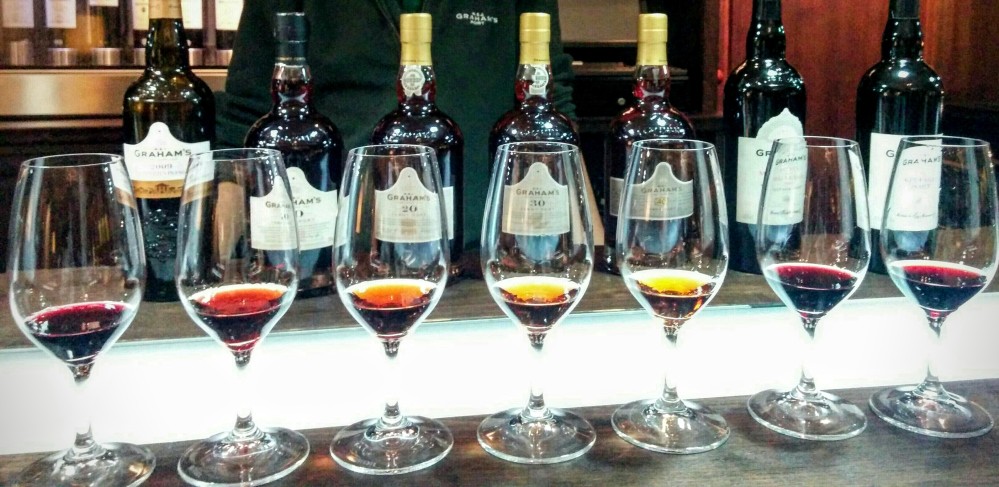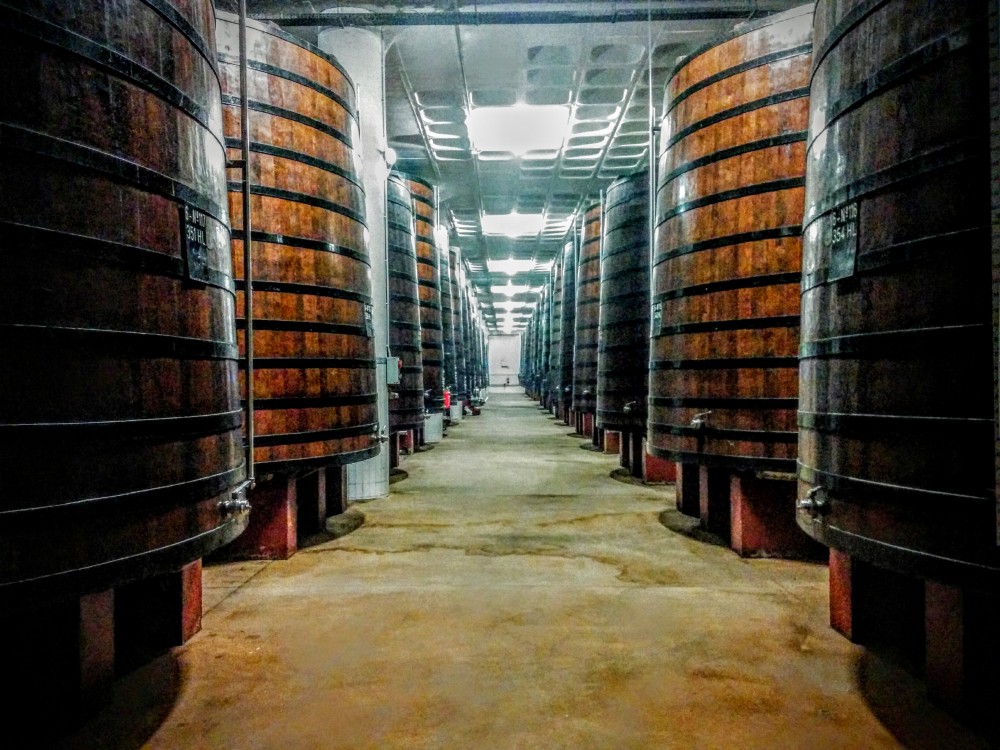“More than a gift from nature, Port Wine is essentially a historic body, a collective cultural heritage of work and experience, art and skill accumulated over generations. Port Wine is and should remain a key product in the national economy, still representing a symbolic value that distinctly represents Portugal worldwide.” — Port Wine Characterisation and Positioning in Portugal, XV Congreso Internacional De Investigación En Ciencias Administrativas A.C. (ACACIA)

I’ve always felt that wine is another form of patriotism, something similar to hanging your country’s flag on your car window during World Cup season, even though you may care little for soccer. It is a way of demonstrating joy for your roots and heritage, and it is a celebration of your identity. An immigrant who has made a home somewhere other than their place of birth will, at one point in their life, need to find a way to rediscover and reconnect with their roots. For me, a Chilean- Canadian, it was through wine. In university, when I became fascinated with Latin American history, I only drank Chilean wine. Chilean wines were the best, I’d tell people. I knew nothing of wines at that time, but that didn’t matter. Chilean wine was from my country, El Ultimo Rincon Del Mundo, and it formed part of the social fabric of my culture. It was a step back into a remote past, when bottles of Gato Negro lined my grandmother’s dinner table alongside the Pebre, palta and hallullas. But more than that, it was also a connection with the poets, writers, and singers that praised the beauty of the land. It was even a way of remembering the disappeared, the exiled, the migrants, and all those whose lives changed, like mine, because of a dictatorship. For me, it represented a history of endurance of a people – my people – and I was damn proud of it.
I get a sense of this same type of national pride and joy here in Portugal from the Portuguese. Wine forms a huge part of Portugal’s rich history, but also part of the everyday life. It is not uncommon for wine to be found at every meal at most homes. And here in Porto, it is the sweet fortified wine that carries the city’s name that attracts thousands of visitors every year. Standing on the iconic Luis I bridge, which connects Porto to its sister city Vila Nova de Gaia, there is a breathtaking view of the dozens of port houses where port wine is stored and aged. These large stones cellars have been shipping port to the rest of the world since the 18th century. Dozens of companies offer tastings, tours and getaways into the valley, to the heart of the Douro where the port magic happens. The barcos rabelos that sit prettily on the banks of the river for tourists to admire are a testament of city so intertwined with wine. And deep within the Douro valley, which stretches from the Marão Mountains to the frontier with Spain, the terraced vineyards are the source of the beautiful berries that provide the juice for the sweet fortified wine.
History runs deep in this part of the (wine) world. According to the Wines of Portugal website, winemaking has been ongoing for over two millennium here. Port winemaking can be traced back to roughly the 13th century. However, it wasn’t until the early 1700s that port production grew considerably, mainly due to a soaring popularity of this wine in England and a trade agreement between Portugal and England in 1703. It is a product that has a deep, fascinating history; one of rough and rugged mountains and valleys, of clergymen and wine merchants, of navigators and explorers, of adventurous voyages at sea, of wars and conquests involving the Portuguese, the French, and the English. Sh**, this wine has a longer history than that of Canada! And it is a wine of incredible depth and complexity, offering an intellectual challenge when sipped and savored.
It is a shame, however, that there appears to be a slight disconnect between a symbol of a city (or nation) and the actual appreciation of it. While Porto offers all sorts of tours, tastings and port experiences for the visitor, very few Portuguese that I know (apart from wine industry people) actually drink port. That is, just to sip it like one would drink a glass of still wine or a whiskey after a long day. It is considered a digestif, the grand finale at the end of a meal, or it can be a celebratory drink for special occasions. It hardly attracts the attention of younger drinkers, a group that could potentially switch their en vogue gin tonics for a tawny. A friend and a fellow WSET-er, who also works at Graham’s Port Lodge, tells me that there is no real port wine culture for younger generations. It’s curious and it makes me wonder why, if it so readily available and can range from any price category.

As a symbol of a city, or even of a country, it stirs up emotions of pride – or at least that is my perception. But export figures indicate that approximately 90% of all port wine production is exported and sold internationally, with France, the UK and Holland being the top three wine importers. That leaves only 10% of port production to be enjoyed in Portugal.
Perhaps understanding the various categories or “families” of port wine gets in the way of actually appreciating it. A tour at any of the port cellars will leave wondering what the difference is between a vintage and a colheita. And then trying to search for the many different flavours within each category turns drinking port into exam more than an experience. Maybe it is viewed as a difficult wine to pair food with because it’s sweet. But then again many of the world’s best sweet wines, such as a French Sauternes or a German Riesling Auslese or Beerenauslese can take centre stage of a meal. While touring at Gran Cruz Porto, the largest port wine producer, winemaking director Jose Manuel Sousa Soares listed numerous dishes that a wonderful 20 year old white port could pair with. And the combinations sounded delicious and exciting! So then, is it considered too old-fashioned, or too elitist, or maybe even too foreign? After all, most of the port houses are owned by British families and have been enjoyed by the Brits for centuries.
Port, I think, is something so distinctively Portuguese – from the soil and the land where the grapes are grown, to the native and noble grapes of the region, and the farmers and labourers that have been growing, harvesting and making port for centuries. Yet its’ history is also so intermingled and intertwined with British influence. I’m still new here and I’m slowly discovering the many layers of Portugal and the Portuguese, but perhaps this port conundrum is that of something so powerful as rediscovering and reconnecting with your roots…. Or I could be wrong.
For those of you who are now a little curious about port wine, those that may have never given it much attention, here is your lesson for today:
Port is a fortified wine, meaning that brandy or a neutral spirit is added to a base wine during fermentation, therefore it has a higher alcohol content than still wine (usually between 18%-20% abv). It is a sweet wine because the spirit that is added stops the fermentation process. The sugar from the grape must has not been fully converted into alcohol. *Adding brandy to still wine was a way of keeping the wine from spoiling during the sea voyages.
The Port families are Whites and Roses, Rubies and Tawnies (Although the Roses are a relatively new member of the family). The Whites are made from white grapes (usually a blend of Viosinho, Malvasia Fina, Rabigato, Gouveio, and Moscatel) and they can either dry or sweet (although “dry” is actually with medium sweetness). The wine is fortified and it may or may not see time in oak. If it has matured for a longer period, such as the 20 year old white I tried at Porto Cruz, it shows exciting nutty and orange marmalade flavours. Rubies are made from a blend of noble grapes from the Douro – Touriga Nacional, Touriga Francesa, Tinta Roriz, Tinta Cão and Tinta Barroca. They are fortified, blended and then bottled after a short time of maturation in large oak vats. As a result, they are fruit-driven wines. They can be drunk immediately after bottling or they can also develop different flavours while aging in the bottle. Finally Tawnies are the same as Rubies, except they spend years maturing in wood (a process known as “oxidative ageing”). The time spent in wood affects the aromas and flavour of the wine because the wine comes in contact with wood and oxygen. As it ages it starts to change from the primary fruit flavours to caramel, nuts, dried fruits, balsamic, wood, toffee, coffee – basically just incredible layers of flavours that can potentially linger in your mouth for hours.










